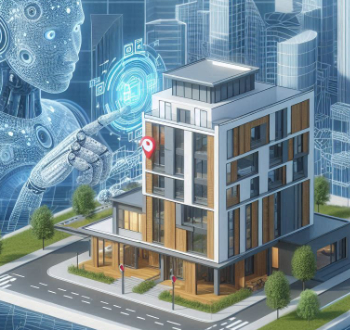Actuator
Contents |
[edit] Introduction
An actuator is a component of a machine that is responsible for moving or controlling a mechanism or system, by converting energy into motion. It is the mechanism by which a control system acts upon an environment. It can be a simple system, such as fixed or electronic, or software-based, such as robot control.
Actuators are often used in manufacturing or industrial applications, and in devices such as pumps, switches, and valves. They have also been used in innovative adaptive structures.
Motion is usually created by air, electricity, or liquid. The types of motion created by actuators are linear, rotary, or oscillatory.
The most common types of actuator are as follows:
[edit] Pneumatic
Pneumatic actuators convert energy formed by a vacuum or compressed air at high pressure into either linear or rotary motion. The advantage of this type of actuator is that has a quick response time as the power source doesn’t need to be stored in reserve. Large forces can be produced from relatively small pressure changes.
[edit] Hydraulic
Hydraulic actuators consist of a cylinder or fluid motor that uses hydraulic power to drive mechanical operation. The motion output can be linear, rotary, or oscillatory. The cylinder consists of a hollow tube along which a piston can slide. Despite having limited acceleration, a hydraulic actuator can exert considerable force as liquids are virtually impossible to compress.
Hydraulic actuators can be either single-acting – when fluid pressure is applied to one side of the piston only – or double-acting – where pressure is applied on both sides.
[edit] Electric
An electric actuator is powered by electrical energy converted by a motor. Electrical energy is used to actuate equipment such as multi-turn valves. Its advantage is that it is one of the cleanest forms of actuator as no oil is required.
[edit] Thermal or magnetic
These actuators tend to be compact, lightweight, and with high power density. They are actuated by applying thermal or magnetic energy.
[edit] Mechanical
A mechanical actuator functions by converting rotary motion into linear motion to execute movement. It involves gears, rails, pulleys, chains, and other devices to operate. An example is a rack and pinion mechanism.
NB Guide to Controls (BG 83/2023) written by John Marrow and published by BSRIA in June 2023, defines an actuator as: ‘An electromechanical device which moves the position of a valve or damper in response to a control signal.’
[edit] Other
Other types of actuator include:
- Electronically positioned actuators.
- Linear actuators.
- Power fail actuators.
- Pulsed input actuators.
- Rotary actuators.
- Spring actuators.
- Thermoelectric actuators.
[edit] External links
- https://www.bsria.com/uk/news/article/new_detailed_us_field_device_study_released/
- https://www.bsria.com/uk/news/article/growth-in-euro4-billion-european-hydronic-controls-market-led-by-rapid-uptake-of-picvs/
- https://www.bsria.com/uk/news/article/queens-building/
- https://www.bsria.com/uk/news/article/centre-for-mathematical-sciences/
[edit] Related articles on Designing Buildings
- Adaptive structures.
- Air source heat pumps.
- BSRIA announces 2021 European HVAC field device study.
- Cantilever.
- Electric motor.
- Exhaust air heat pump.
- Flange.
- Gasket.
- Institution of Mechanical Engineers.
- Key qualities of springs.
- Mechanical and electrical.
- Mechanical engineer.
- Mechanical ventilation.
- Valves.
Featured articles and news
The history of building regulations
A story of belated action in response to crisis.
Moisture, fire safety and emerging trends in living walls
How wet is your wall?
Current policy explained and newly published consultation by the UK and Welsh Governments.
British architecture 1919–39. Book review.
Conservation of listed prefabs in Moseley.
Energy industry calls for urgent reform.
Heritage staff wellbeing at work survey.
A five minute introduction.
50th Golden anniversary ECA Edmundson apprentice award
Showcasing the very best electrotechnical and engineering services for half a century.
Welsh government consults on HRBs and reg changes
Seeking feedback on a new regulatory regime and a broad range of issues.
CIOB Client Guide (2nd edition) March 2025
Free download covering statutory dutyholder roles under the Building Safety Act and much more.
AI and automation in 3D modelling and spatial design
Can almost half of design development tasks be automated?
Minister quizzed, as responsibility transfers to MHCLG and BSR publishes new building control guidance.
UK environmental regulations reform 2025
Amid wider new approaches to ensure regulators and regulation support growth.
The maintenance challenge of tenements.
BSRIA Statutory Compliance Inspection Checklist
BG80/2025 now significantly updated to include requirements related to important changes in legislation.






















